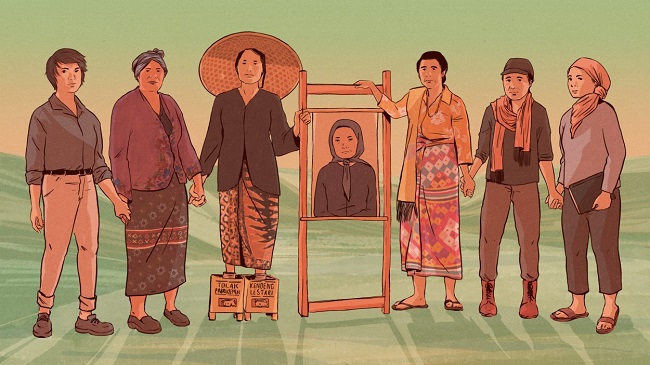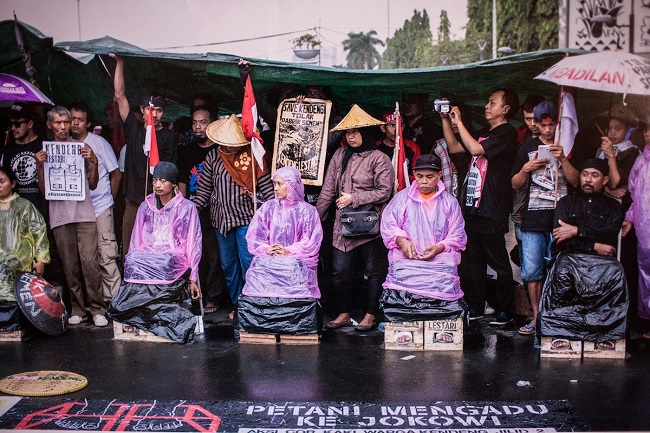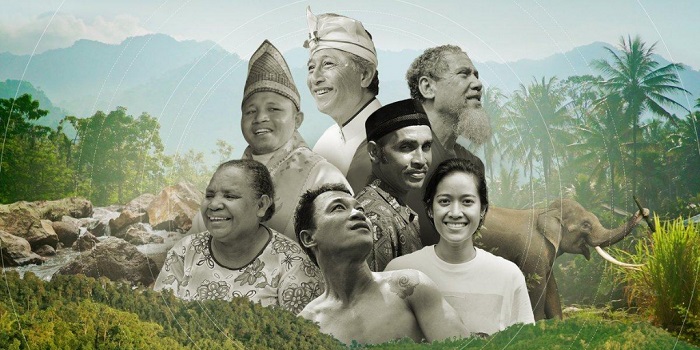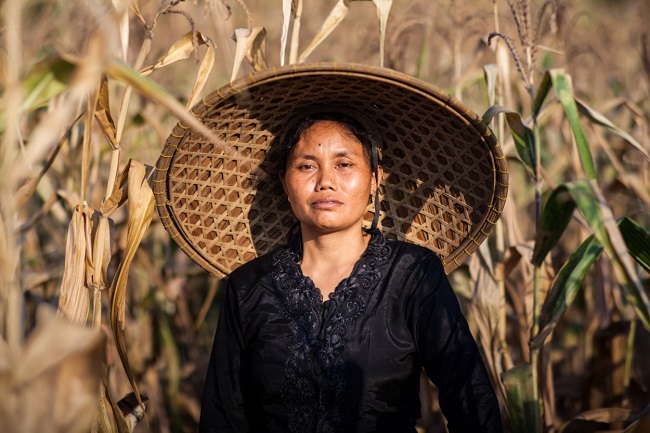Recent documentaries have highlighted the agency of women in tackling the local and global environmental challenges of our time
Edwin Jurriëns
Versi Bahasa Indonesia
In 2020, Indonesian journalist Febriana Firdaus together with London-based filmmaker Leo Plunkett created the 55-minute environmental documentary Tanah Ibu Kami, also released under the English title of Our Mothers’ Land. The film was produced with support from the independent environmental news organisations The Gecko Project and Mongabay. It is accessible on digital platforms such as YouTube, has been screened at various film festivals around the world and was winner of the 2021 Spirit of Activism Award of the Wild and Scenic Film Festival in Nevada City, California.
Our Mother’s Land signifies renewed interest in environmental documentary in Indonesia and around the world, particularly since the intensified social and political debate about climate change in the 1990s and the popularisation of digital information and communication technology. Together with several other Indonesian documentaries produced in the 2010s, it highlights the agency of women in confronting, discussing and analysing some of the main local and global environmental challenges of our time.
Agents for change
In Our Mothers’ Land, Firdaus travels to different parts of the Indonesian archipelago to interview female activists who are responding in different ways to the environmental problems in their immediate surroundings. Among the interviewees are Sukinah from the Kendeng mountain range in Jawa Tengah province; Aleta Baun and Lodia Oematan from the Mollo highlands in Timor, Nusa Tenggara Timur province; Eva Bande and Yu Patmi from Luwuk, the capital of the Banggai regency in Sulawesi Tengah province and Farwiza Farhan from the Kawasan Ekosistem Leuser conservation area in Aceh province.

While also providing impressive, drone-facilitated footage of the scenery in each location, the documentary’s primary focus is on the moving, intimate, and illuminating one-on-one conversations between Firdaus and the local activists. By using a soft voice, slow pace, modest body language, and gentle physical contact, Firdaus makes the women feel confident to speak for themselves and on behalf of their communities. In the process they reveal personal and often traumatic experiences from the struggles against environmental and social injustice.
Sukinah discusses the role of a predominantly female protest movement against the establishment of cement factories in the Kendeng mountain range. Baun and Oematan explain how local women have been using their weaving looms as a tool to obstruct the exploitation and destruction of the sacred Mollo hills by the mining industry. Bande and Patmi detail the impact on them and their families of police detention and violence that followed community action Bande led against the palm oil industry in Banggai regency. Farhan highlights her activism in the realms of research, media campaigns and policy-making for the protection of the Leuser conservation area in northern Sumatra.
A striking message from many of the stories is not merely that the protests have been led by women, but also that these protests must be led by women. Various interviewees explain that women have first-hand knowledge of nature and environmental change due to their management and execution of daily tasks such as farming, cleaning, cooking, as well as trading food and handicrafts. Their preparedness to give up these essential tasks, sometimes for up to a year, in order to lead and participate in environmental action, itself conveyed the urgency of the matter for the wellbeing of their families, communities and society as a whole. The women believe their social skills, emotional strength and physical control have reduced the risk of the violent escalation of public protest, and have contributed to the longevity of the environmental movement.
Moral movement
The female resistance against the cement industry in the Kendeng area was also the theme of a 2015 39-minute documentary, titled Samin vs Semen, by the Indonesian documentary production house Watchdoc. The title refers to the Saminist belief system of the local communities leading the protest movement against cement (semen). The belief system is named after Surontiko Samin (1859–1914), a peasant who organised peaceful resistance against Dutch colonialism at the end of the nineteenth century, including ignoring colonial land ownership laws and taxes. Contemporary environmental movements have appropriated many aspects of Saminism, including organic farming, independent education, religious pluralism, and egalitarian Javanese language use.

The documentary explains that despite local communities winning court cases against the cement industry plans, the PT Semen Indonesia company continued with the construction of a factory in the Rembang regency in June 2014. It contains footage of the police trying to remove large groups of women who blocked the road while singing songs and holding banners. The initial protests developed into an ongoing movement in which women have been playing a prominent role.
One of the key characters in the documentary is Gunarti, a female activist leader and follower of Saminism. Gunarti explains how she supports her household of four with a modest income, by adhering to an environmentally friendly and waste- and cost-reducing lifestyle including organic farming and the use of biogas. She also home-schools her children, with an emphasis on farming, egalitarianism and moral behaviour.
In addition to explaining her roles as farmer, mother and educator, the documentary also highlights her activities as an environmental activist, showing her on a tour to villages in the Kendeng region that have been under threat of the construction of cement factories. In the villages, she uses the local language, Javanese, to urge groups of local women not to sell their land. She explains to them that the land, and not money or cement, will provide the food and sustain the livelihoods of the future generations in the region.
The documentary also contains interviews with male farmers who had received only minor compensation for their land by the cement company. As they explained, money from the land sale was now all spent, including on a motorcycle that had already broken down. The former farmers had been forced to move into low-paying jobs, such as guarding the land blocked by PT Semen Indonesia, while also experiencing the environmental impact of the digging activities that had gone far beyond the original verbal agreements with the company.
Throughout the documentary there is footage of intimidation of protesters by the police, army, thugs, and village government officials, ranging from veiled accusations of communism to the real threats of kidnapping and physical violence. The documentary ends with drone footage of a procession of women, men and children carrying an Indonesian flag and a ‘Reject the cement factories in Java’ sign through the rice fields, suggesting that despite these challenges the female-led movement is there to stay.
Striking a balance
Semesta (‘Universe’), released under the English title Islands of Faith (2020), is a third example confirming the leading role of women in environmental movements throughout the archipelago. This documentary by female director Chairun Nissa was co-produced by actor and celebrity Nicholas Saputra and Mandy Marahimin with support from the Indonesian Ministry of Environment and Forestry and the European Union. As indicated by its English title, and similar to the connections drawn between Saminism and the preservation of the Kendeng mountains in the other two films, the documentary seeks to show how environmental care and protection and a balance between humans and nature is ingrained in the many different belief systems that shape Indonesia’s unique religious and ethnic diversity.
The documentary presents examples from seven corners of the archipelago. For instance, a Balinese priest explains the practices of silence and meditation during the day of Nyepi in Balinese Hinduism. While Nyepi focuses on the cleansing of the body and the mind, and the restoration of balance in humans and between humans and their surroundings, including nature, it also dramatically reduces carbon emissions on the day. This is due to the minimisation of waste-producing activity, including the closure of the international airport.

Another example is the Gawai harvest celebrations by the Dayak Iban community in the Sungai Utik village of the Kapuas Hulu regency in Kalimantan Barat province. Members of the community explain how they preserve nature and maintain food security by distinguishing between sacred conservation forest (Kampong Taroh), production forest for building supplies (Kampong Galao) and residential forest for daily needs (Kampong Pemukiman).
The documentary also presents a Catholic priest leading a hydro-energy project in the Bea Muring village in Flores, an Islamic religious leader from Pameu village in Aceh mitigating tension in the co-habitation between humans and elephants, and organic farming initiatives near and in the urban areas of Yogyakarta and Jakarta, respectively. In all cases, local leaders from different faiths make references in their sermons and conversations to people’s religious obligation to control their behaviour, care for nature and protect all of God’s creatures.
The segment specifically dealing with the role of women focuses on an all-female Protestant congregation in the Raja Ampat regency in West Papua. The women manage their own sasi, a local conservation scheme that temporarily bans the harvesting of sea fauna. The documentary shows how after a ban on fishing for six months, restrictions are lifted for one week, during which, with the help of village children, the women search and dive for shellfish, sea cucumber, lobsters and other sea fauna. The women prepare their own food and manage their own income. They are confronted with theft and destruction from outsiders who illegally hunt for sea creatures during sasi with methods such as air compressors, poison and explosions. In church services, psalms are sung and references made to the sea, sea animals, the Garden of Eden and the Day of Judgement.
Documenting activism
All three documentaries have a nation-wide coverage and establish links between gender equity, social justice, religious diversity, and environmental sustainability. In that regard, they confirm the boundaries of the nation-state and the importance of religion in state ideology. At the same time, each has its own style and approach in addressing female agency in environmental activism.
Our Mothers’ Land provides intimate portraits in which female activists share their personal experiences and environmental and socio-political insights. Samin vs Semen contains raw footage with authentic, DIY quality in the style of citizen journalism of women’s daily activities and involvement in environmental campaigns and, occasionally dangerous protest actions. Islands of Faith includes coverage of a women-led conservation initiative.
Islands of Faith refrains from explicitly identifying the socio-political factors and actors responsible for environmental destruction, instead opting for text segments with rather generic messages and data about environmental pollution and people’s responsibility in reflecting on and implementing possible solutions. Its less critical lens was possibly constrained due to the sources of its funding.
The independent productions Our Mothers’ Land and Samin vs Semen, on the other hand, explicitly identify the policies and companies responsible for environmental and socio-cultural wrongdoing. Such efforts to identify the interrelations between the environment, politics, and society, in line with the critical thinking in the academic and activist fields of political ecology and ecofeminism, are crucial for more substantial and enduring forms of environmental care.
Edwin Jurriëns is Convenor of Indonesian Studies at the Asia Institute, The University of Melbourne.












